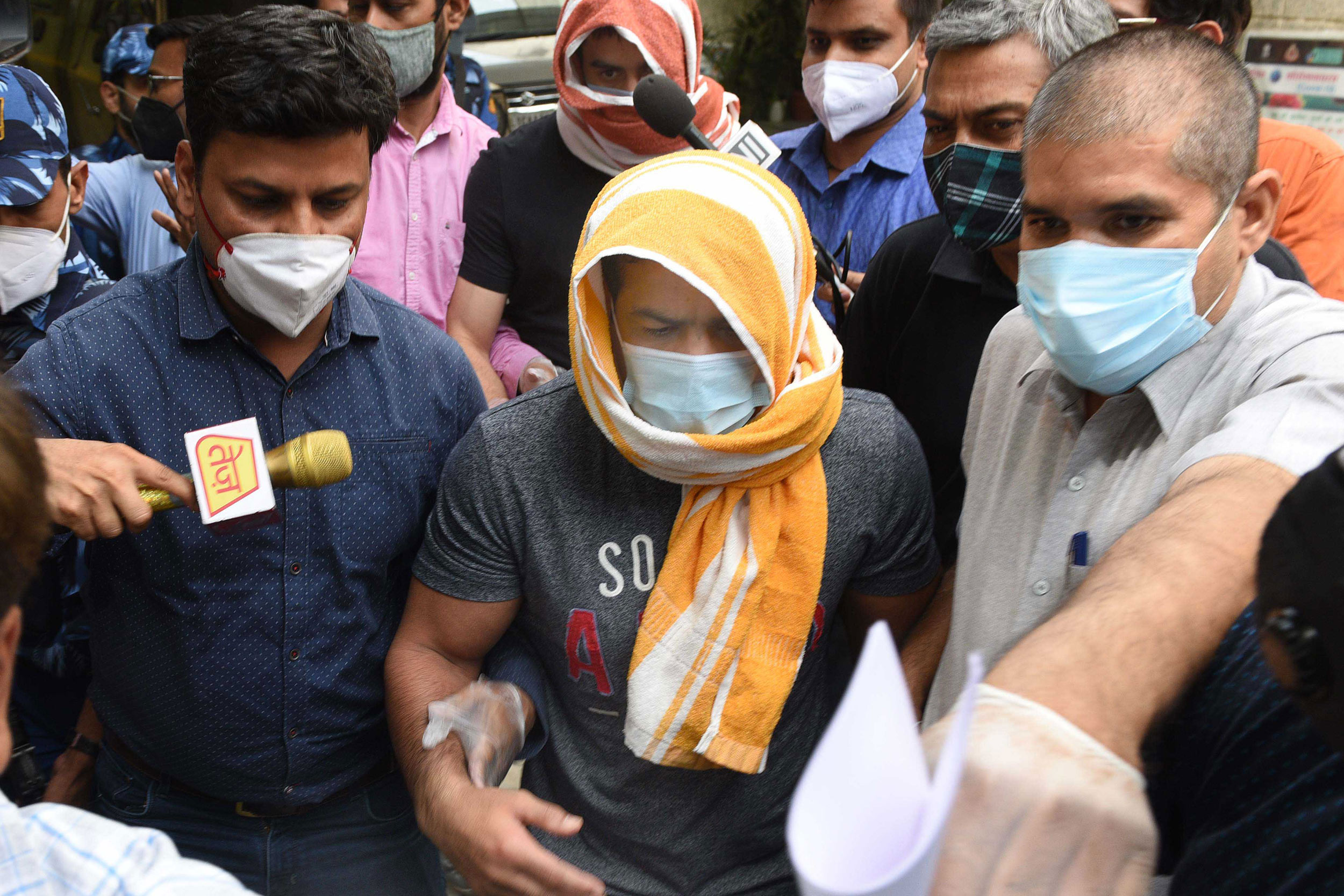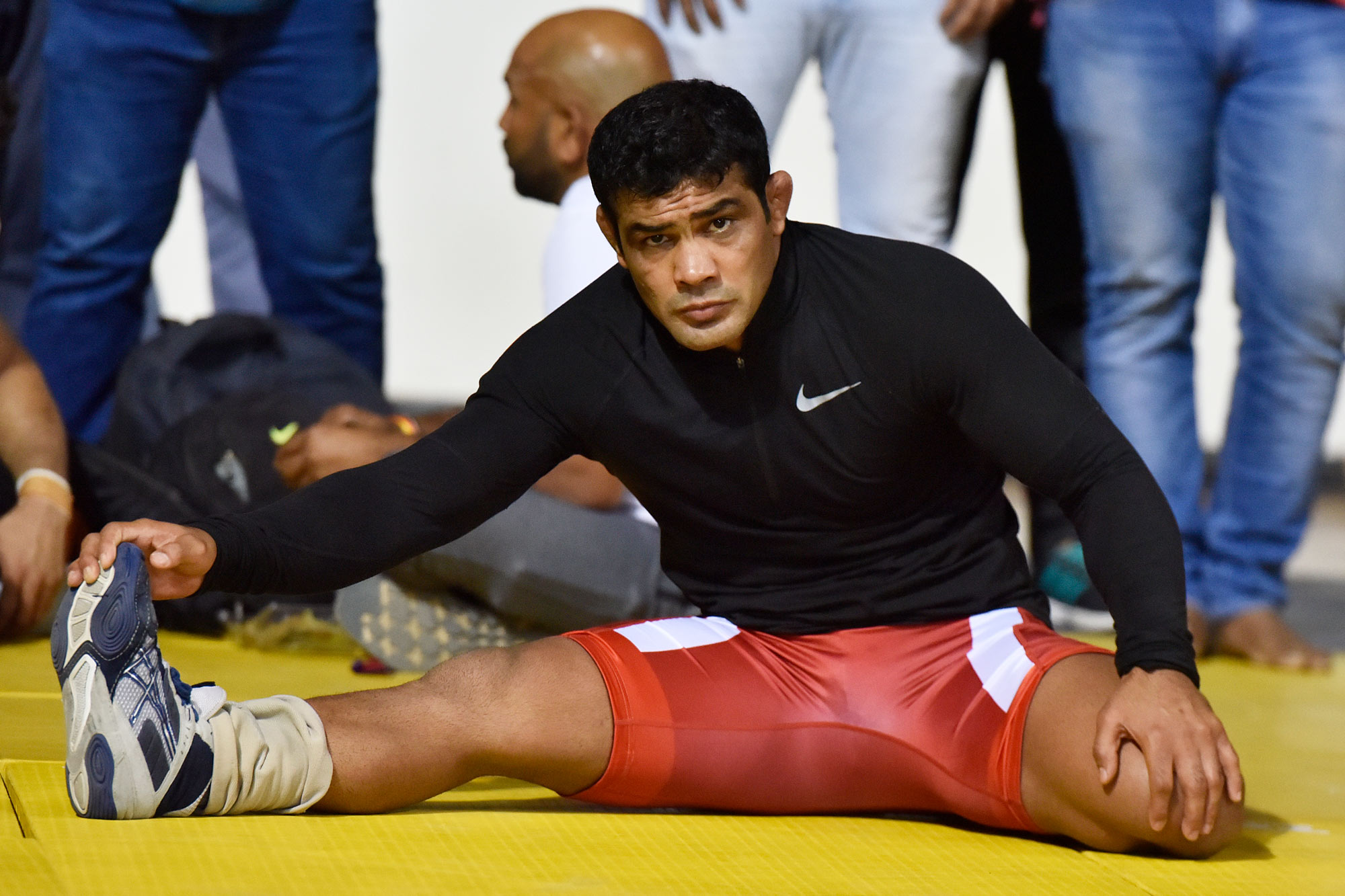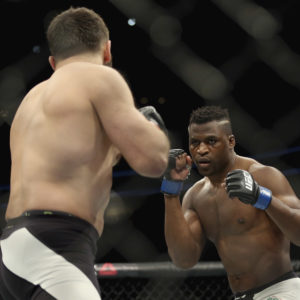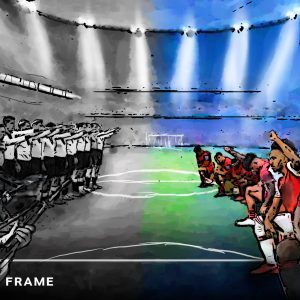The dark underbelly of wrestling in India
An Olympic star’s indictment in a murder case has revealed the pervasive culture of Indian wrestling, which has embraced a toxic mix of nationalism and criminality.
Author:
9 November 2021

India’s sports fraternity was left in a state of shock and disbelief on 23 May, when wrestling star Sushil Kumar was arrested for his suspected involvement in the death of a young wrestler. Despite the odd paradox of one of India’s most decorated Olympians falling from grace on World Wrestling Day, his prosecution for murder cast a new perspective on the country’s endemic culture of violence surrounding wrestling.
The sport has a long history and glorious past in India. Hundreds of young boys dream of becoming famous wrestlers like the many agile and muscular champions in the country. Kumar has not only won two Olympic – a bronze and a silver – and three gold Commonwealth Games medals, but has also been world champion in his weight category. The 37-year-old was awarded India’s fourth-highest civilian honour, the Padma Shri award, in 2011 and India’s two highest sporting prizes: the Arjuna Award in 2006 and the Rajiv Gandhi Khel Ratna Award in 2009.
As Kumar’s illustrious trail of achievements now lies in tatters, the chain of events surrounding his arrest and the death of a younger wrestler reveals the toxic mix of politics, caste, hypermasculinity and criminality that thrives in this popular sport in northern India’s hinterlands.
Kumar was arrested as the main accused in the murder of a 23-year-old former junior national champion, Sagar Dhankar, who died from his injuries following a brawl at Delhi’s Chhatrasal Stadium, the cradle of Indian wrestling and the venue where Kumar began his career. According to the police, Kumar and his associates assaulted Dhankar in May over a property dispute.
The police had filed a first information report against the accused, including Kumar, for offences such as murder, attempted murder, culpable homicide and criminal conspiracy. They then filed a charge sheet on 2 August, which said the brawl was the result of a “conspiracy” hatched by Kumar, who felt that his “ego was bruised by rumours of his diminishing clout and he wanted to re-establish his authority among younger athletes”.
In his bail plea, which a Delhi court dismissed on 5 October, the wrestler maintained that the police tried to paint a “false and guilty image” of him and presented distorted information about the case to the media to establish connections between him and gangsters.
Kumar was 14 years old when he joined the gymnasium at Chhatrasal Stadium, which his previous coach Satpal Singh founded in 1988. When Singh retired in 2015, Kumar was appointed as an officer on special duty, to step in as a coach for aspiring wrestlers. He is said to have treated the stadium as his fiefdom, where he is revered by his protégés, including Dhankar.
Related article:
Pertinently, this was not the first time Kumar had found himself at the heart of a major controversy. He was embroiled in a bitter feud with rival wrestler Narsingh Yadav, who had gained the berth for India at the 2016 Rio Games after winning a World Championship medal. Kumar’s ambition to compete in his third consecutive Olympics prompted him to demand a trial against Yadav and he appealed to the high court in Delhi after being denied by the Wrestling Federation of India.
Yadav subsequently accused Kumar’s accomplices of spiking his meals with drugs, thereby ending his Olympic aspirations and resulting in a four-year suspension from the sport. Kumar also fell out with fellow wrestler and one-time friend Yogeshwar Dutt, a bronze medal winner at the 2012 London Olympics.
India’s wrestling culture
The notion that Kumar intended to restore his authority over other wrestlers and keep the stadium as his personal dominion alludes strikingly to the prevalent culture linked with the sport. His rags-to-riches journey, as well as his subsequent arrest, highlight the difficult milieu in which aspiring Indian wrestlers find themselves.
Many small towns and villages, especially in the northern Indian states of Haryana, Uttar Pradesh, Punjab and Delhi pour resources into building makeshift wrestling arenas – known colloquially as akharas – where young boys turn out to exercise, stretch and strengthen their muscles, and grapple with each other in the mud to become wrestlers or pahalwans.
Wrestling in India is known colloquially as kushti and has a distinct style. It is also called pahalwani, which refers to wrestling as a way of life and a concept that articulates the values and ethics of a distinct ideology.
Related article:
Joseph Alter, an anthropologist at the University of Pittsburgh in Pennsylvania, United States, has written extensively about pahalwani. According to Alter, it is a regimen of self-discipline – including diet, exercise and training – that is designed to maximise the production and retention of semen, which is thought to be the essence of masculinity. “Dands (jackknifing push-ups) and Bethaks (squats) are two primary forms of exercise that define physical self-development in terms of this bio-moral substance of masculinity,” he notes, adding that as a way of life, pahalwani is closely associated with akharas and the structured training of disciples by gurus.
Indian wrestling is also a synthesis of two different traditions: the Persian form of the art brought to India by the Mughals and a native form that dates back at least to the 11th century. Although technically the two types of wrestling are identical, the culture of Muslim wrestling is formally different from Hindu wrestling.
A history of violence
Alter states that the professionalisation, institutionalisation and bureaucratisation of international-standard freestyle wrestling in modern Indian has resulted in a wrestling culture that is global in aspiration but entrenched in an ethos of insecure masculinity. It is deeply rooted in regional, patriarchal caste groups and is neither urban nor cosmopolitan.
There aren’t many national winners who have gone on to be successful in international competition or make a decent wage because of their athletic abilities. Many do not even manage the government position for which they are qualified owing to sports quotas. In this setting, the attempt to keep afloat using brute force, their major skill, is a frequently explosive cocktail.
Related article:
Consequently, many active and retired wrestlers end up being hired by politicians as musclemen, by banks and money lenders as recovery agents, and as bouncers at clubs and bars. Some join criminal groups and gangs, and engage in intimidation to extort protection money.
“Historically, wrestling and such fight sports end up feeding the requirements for strong men in illicit dealings and other businesses that rely on physical strength and intimidation to get the job done,” writes journalist Leslie Xavier. “Everyone knows it to be true, but turns a blind eye, accepting it as part of the sport.”
Nationalism and wrestling
Links have also been drawn between Indian wrestling and Hindutva nationalism. But Alter says the structure of akharas and wrestlers’ belief systems are antithetical to the type of Hindu nationalism supported by Hindu militant groups such as the Rashtriya Swayamsevak Sangh (RSS) – which is regarded as the parent organisation of Prime Minister Narendra Modi’s Bharatiya Janata Party – even though some of the rhetoric may sound the same.
Alter says that while wrestlers may be affiliated with groups such as the RSS and may have taken part in Hindu nationalist violence on occasion, they did so not in their capacity as wrestlers and therefore the link between political violence and kushti is coincidental.
Challenging this notion, historian George Peabody documented clear links between wrestlers’ involvement in collective violence and communal riots. He underlines that there has been a rising, if still imperfect, religious divide in Indian kushti, which undoubtedly mirrors the broader milieu of religious intolerance that preceded the rise of Hindu nationalism in India.

Highlighting the case of 1989 anti-Muslim riots in Rajasthan’s Kota, Peabody concludes that incidents such as the Kota riots and the general demonising of Muslims show clearly that wrestlers subscribed to important aspects of the Hindu nationalist programme and many took part in violence in a context that foregrounded their identity as wrestlers.
In a country where Hindu right-wing politics continues to redefine people’ lives, it is likely that the sport will stay intimately entangled in religious, caste and regional politics. In that context, Kumar’s journey is possibly the most fitting account of Indian wrestling, which continues to straddle the traditional philosophy of the game as well as the complicated social realities and culture surrounding those who take up the sport.



